The culture of the cave dweller
When you hear the words “cave dweller”, your mind likely goes immediately to images of the sloping foreheads and protruding teeth of the Cro-Magnons of textbooks and Geico commercials. In fact, though, people have been living in caves in the deep heart of France for tens of thousands of years.
Karen and I have had the thrill of being among the very few visitors allowed in each day to see the prehistoric paintings on the wall of the caves at Font de Gaume and Combarelles. We’ve seen examples like the defensive fort built in a cave above La Roque Gageac, and the remarkable network of troglodytic chapels that make up the ancient church behind the Abbey at Brantome.
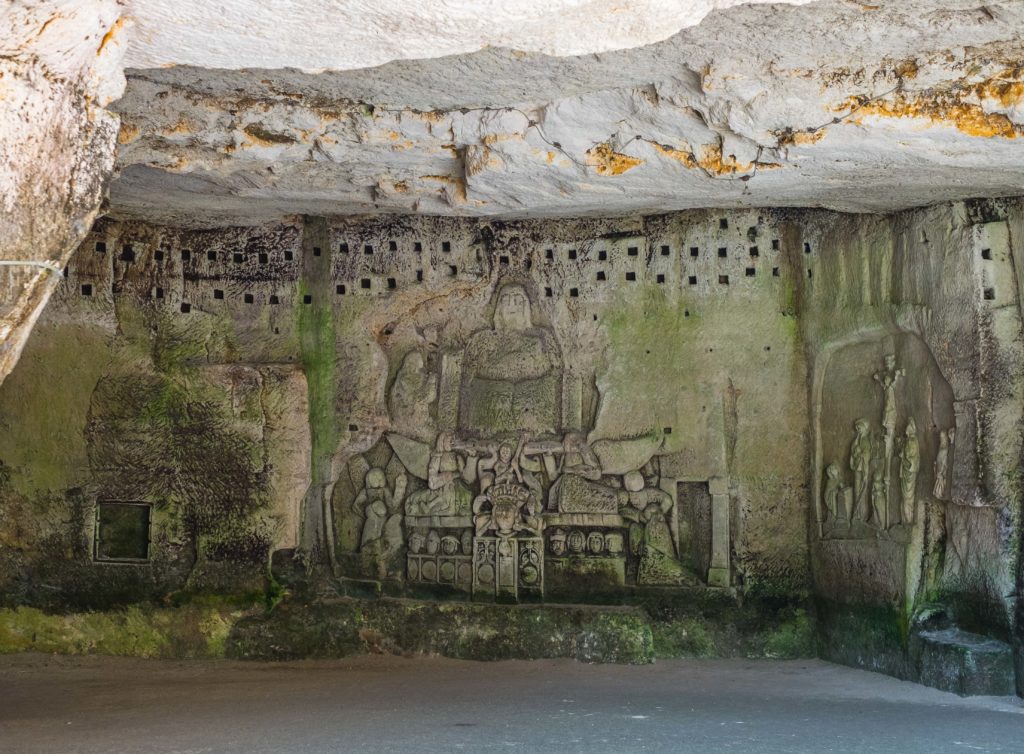
And even today, there are still a few places around the country where you can find families living in homes built by adding walls and modern amenities to natural openings in the face of rocky cliffs – here are just a couple of examples from the villages of Baumettes and Graufthal.
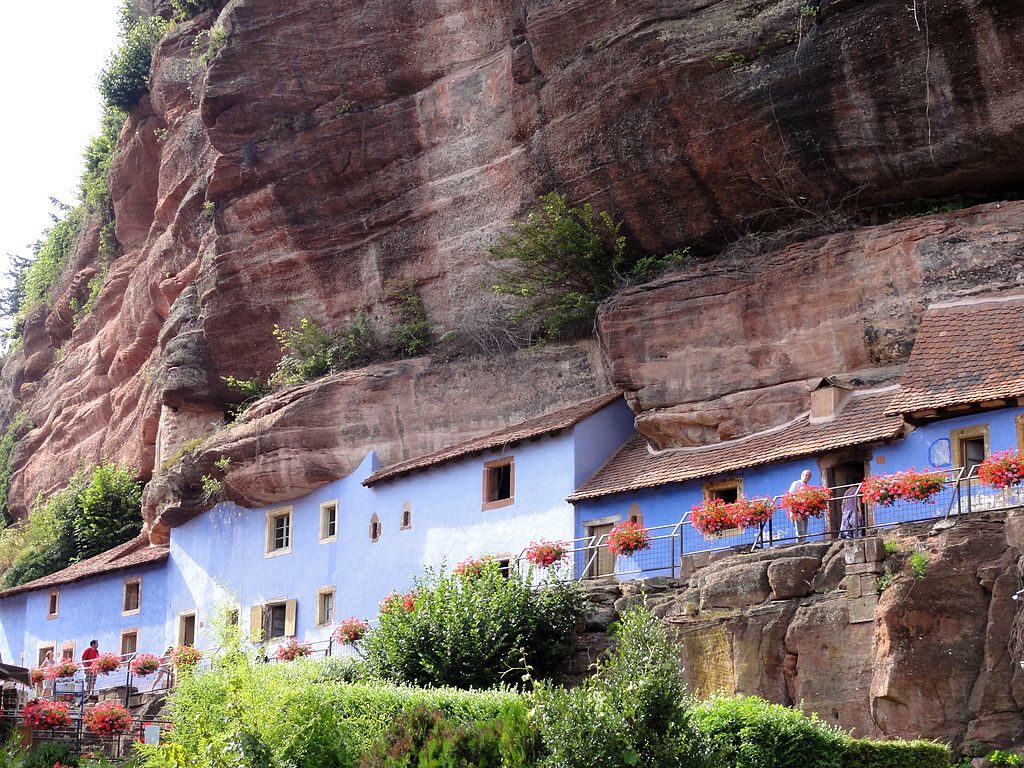
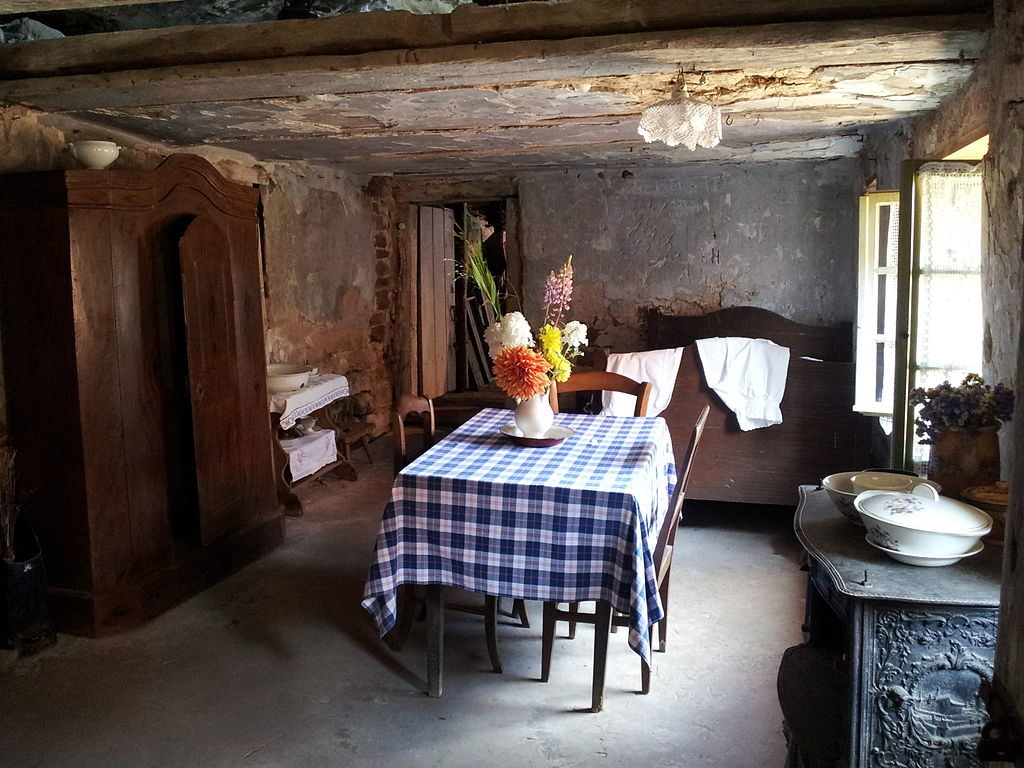
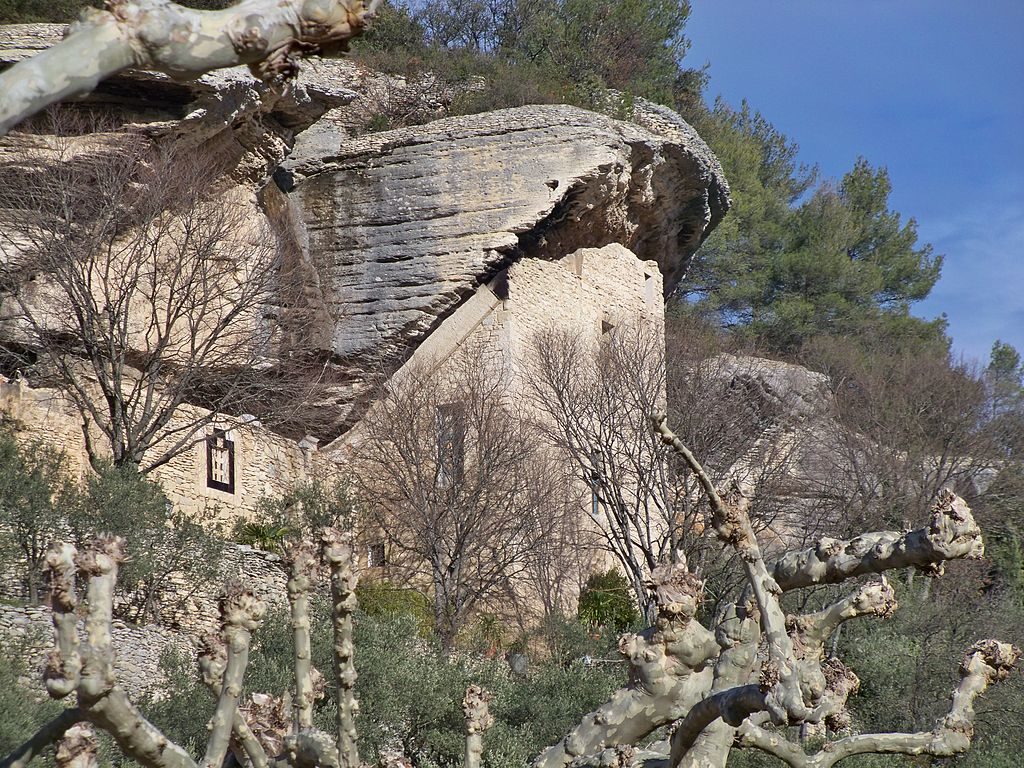
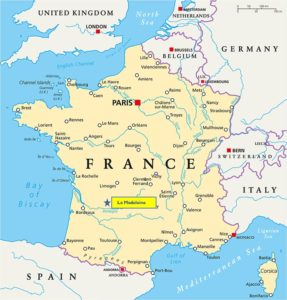
A site that spans the ages
Not many sites, though, demonstrate the long progression of the lives of cave dwellers like the one at La Madeleine. We’re looking down on a bend in the Vézère, downstream from the ‘seaport’ town of Saint-Léon-sur-Vézère and 25 minutes from the great medieval market town of Sarlat-le-Caneda.
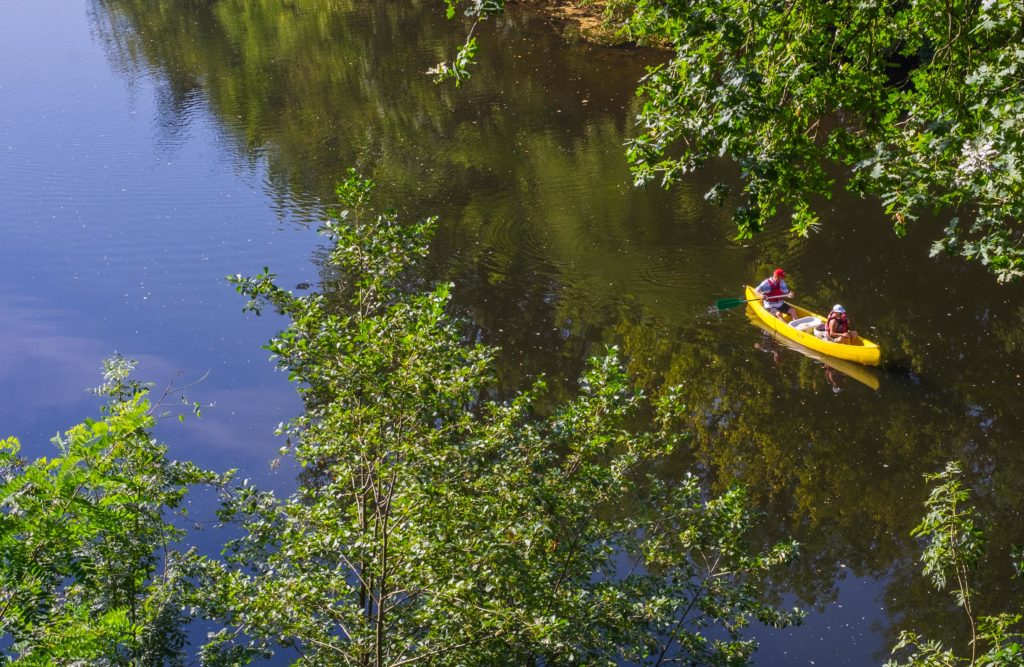
The remarkable character of this site comes from the fact that it has been occupied by humans off and on for something like 50,000 years. Its discovery was considered so important that an entire cultural era (from 12,000 B.C. to about 8,000 B.C.) is named “Magdalenien” in honor of this village.
It’s easy to see why La Madeleine would have appealed to our earliest ancestors in the region. It’s naturally protected from intruders – anyone approaching from above would slide straight down the rock face into the river below, and there’s only one way in and out of the narrow “street” that connects the different cave chambers. Getting water from the river would have been relatively easy, but you can see forever across the valley of the Vézère from here, so it would have been easy to fend off attacks coming from that direction.
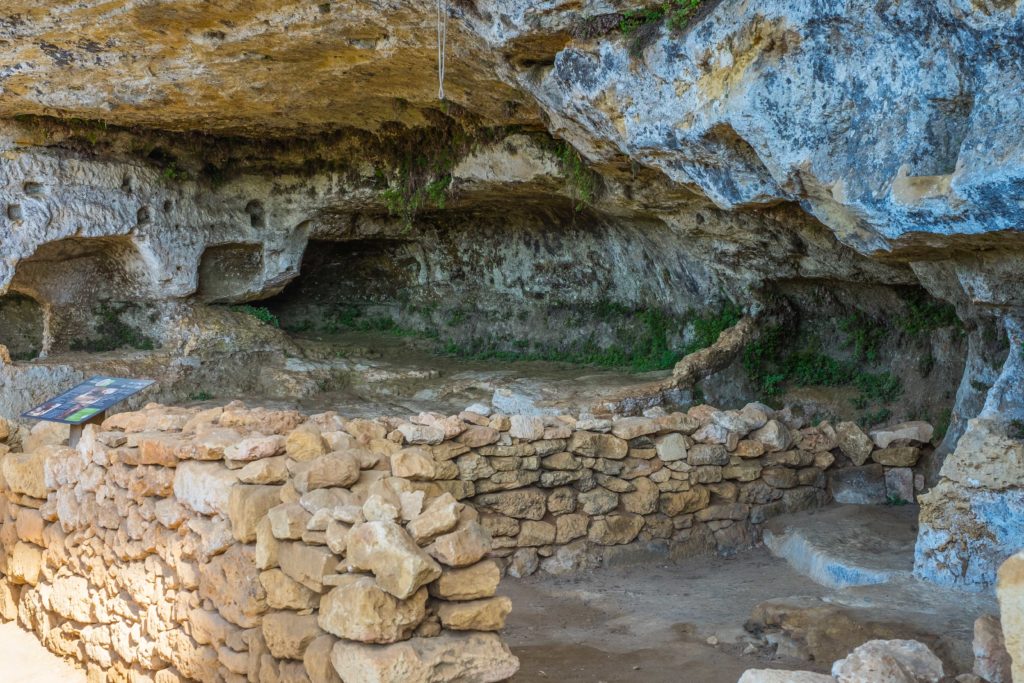
First inhabitants of La Madeleine
The first serious archeological digs came after the site had already been inhabited for centuries. In 1863, Edouard Lartet and Henry Christy found a trove of artifacts that tell the story of those first Cro-Magnon people who lived in these caves. They had relatively sophisticated tools – harpoons for hunting and chisels for shaping the stone of their cavern walls. They also had art; the two explorers found bracelets, necklaces, a carving of a mammoth on a plaque of ivory, and an image of a bison carved on a reindeer antler.
Our ancestors here had fire – archeologists have found a number of oil lamps that would have brought heat and light into the caves. They would have used the fires to cook, too; multiple excavations of the site at La Madeleine have turned up piles of reindeer bones and cartilage from salmon taken from the river, as well as bones from horses, rabbits, and ibex.
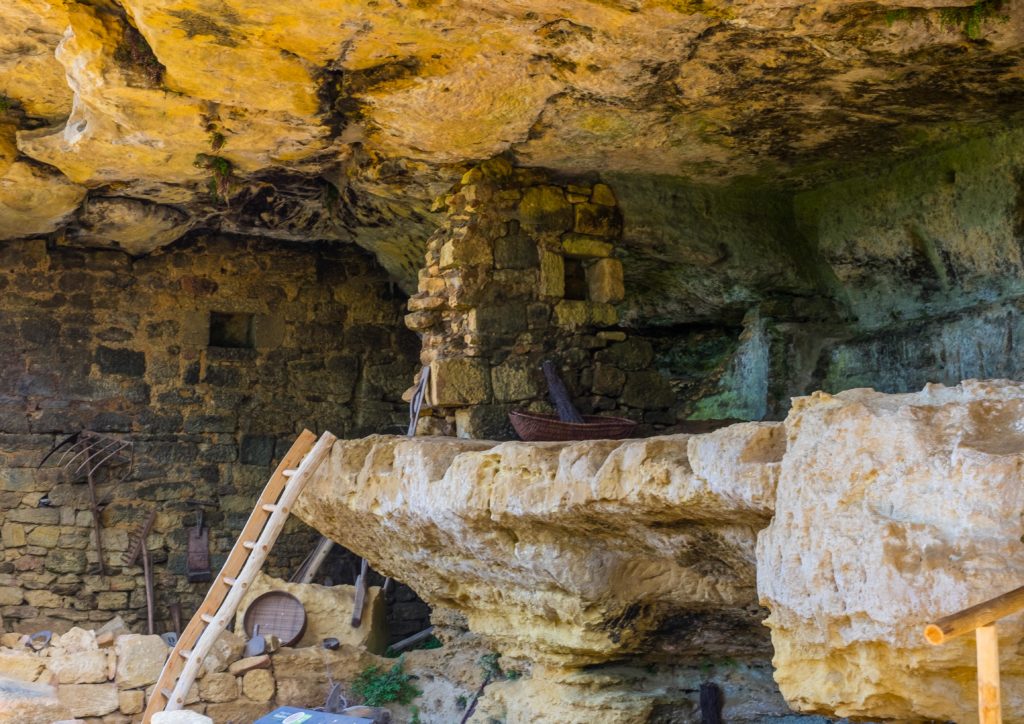
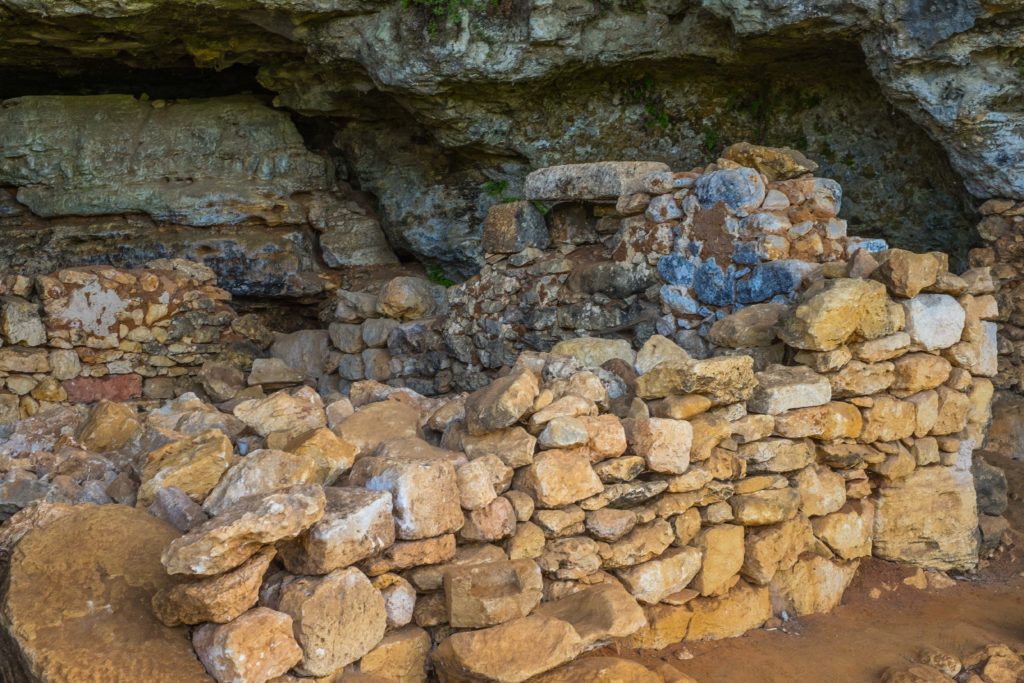
We have an idea, too, that these earliest inhabitants had some kind of spiritual life. In 1926, Dennis Peyron discovered the grave of a 4-year-old child surround with a trove of ritualistic elements – hundreds of shells and pierced animal teeth that would have been used to decorate the child’s body with jewelry.
A refuge from violence
Unlike many of the other prehistoric sites in the Dordogne, though, La Madeleine continued to live as a community across the centuries. For me, the most interesting aspects of the ruins come from the Middle Ages, as people came here to escape from the waves of violence that wracked this part of France over the centuries – the invasions of barbarians from the east, the marauding of the Vikings (Normans), the constant fighting between English and French armies during the Hundred Years War, and the Wars of Religion that pitted Catholics against Protestants across this region.
So people gathered again and again at La Madeleine. Beginning in the 8th and 9th centuries, they took advantage of the natural defensive strengths of the site to build a village, with everything you would expect to find in a little French medieval commune.
Individual houses were constructed in the clefts in the face of the rock wall; some of them even had two levels, with a kind of loft bedroom accessible by ladder or carved stone staircase. By the 18th century, some of the houses added fireplaces and the ductwork necessary to keep smoke from filling up the caverns. Niches were cut into the rock walls to provide storage.
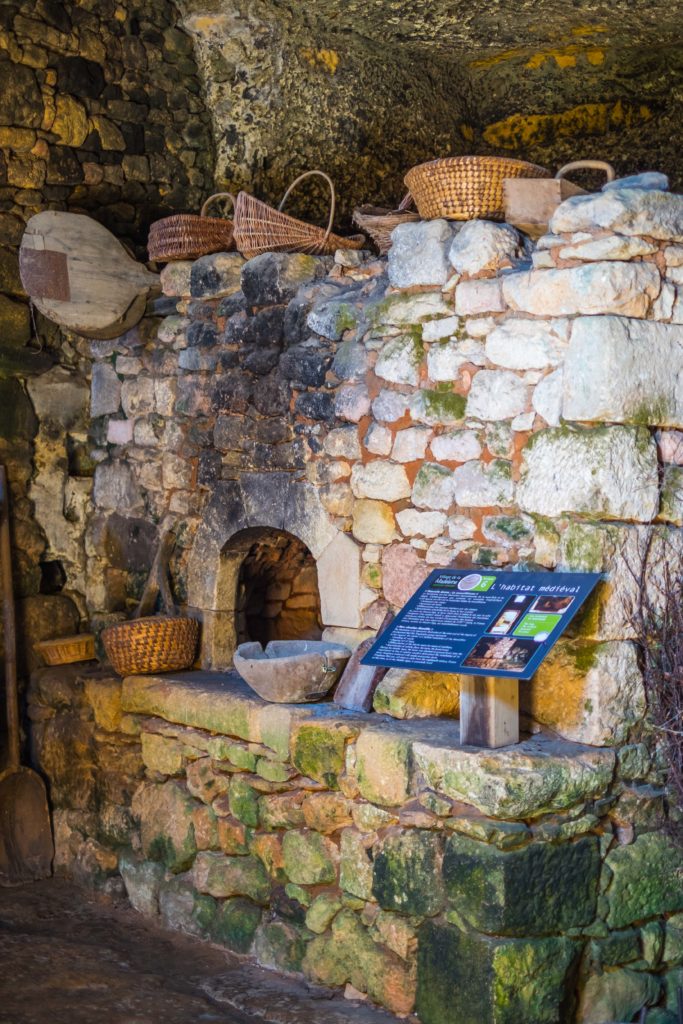
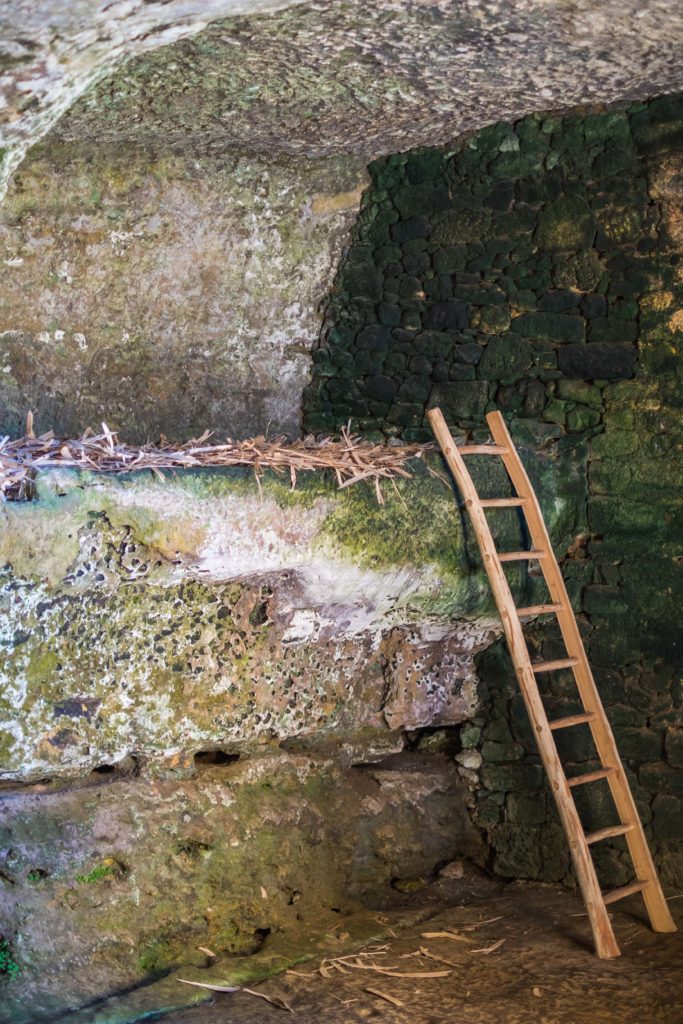
The sense of a larger community
Like any other little village, though, La Madeleine needed more than just individual homes. A massive door was installed across the only “street” at the entrance to town, and a channel was cut down the middle of the path to drain water and sewage from the site. A communal oven was established to provide bread. A “cluzeau” was cut into the rock above the main level of the village to serve as a kind of defensive look-out to protect against invaders; the curators at La Madeleine call it a predecessor to the castle keeps of later generations and note that many other cave-dweller sites along the Vézère have similar structures.
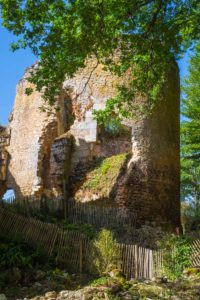
Perhaps inevitably, hierarchy came to the community, too. There’s a small castle on the site, itself a kind of troglodytic structure since it is rooted in the rock of the cliff wall. Although there’s evidence of a building here from the 8th century, the ruins you see today were built by the Sireuil family in the 13th century A.D., a relic of the Hundred Years War. The Beynac family of Tayac seized the castle from them in 1354 and managed to hold onto it until it burned down in 1623.
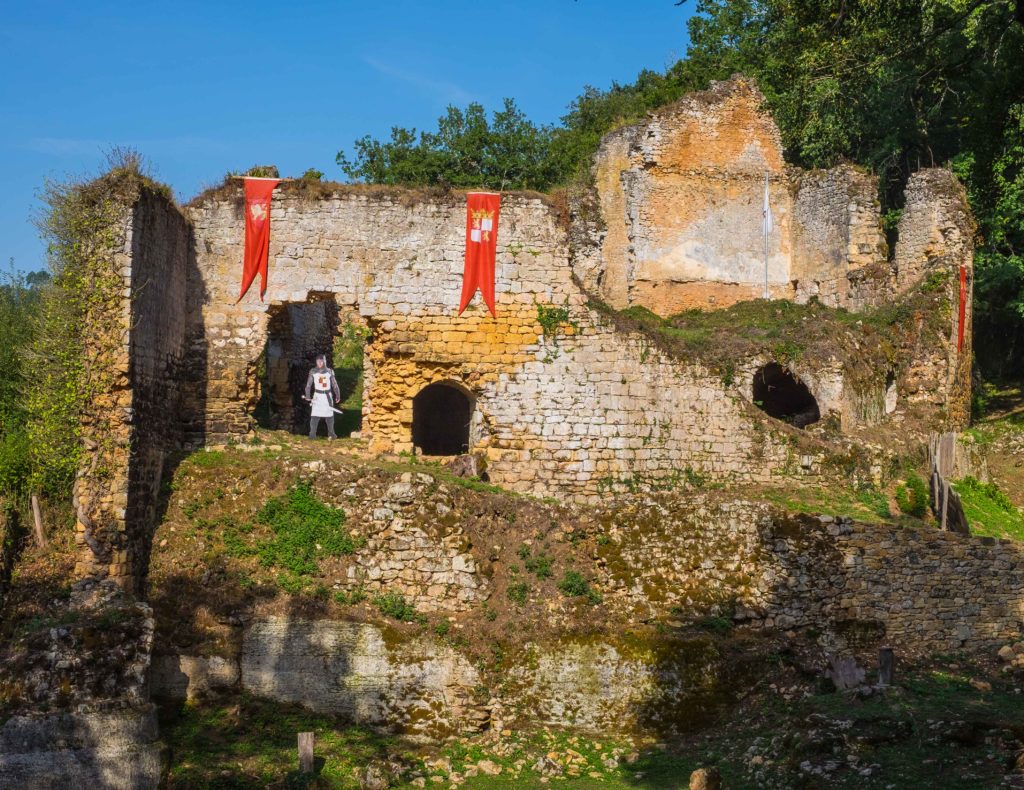
As in so many old French castles, the fire meant the chateau was never rebuilt, instead becoming a quarry for stones to be used in other buildings around the area. But a beautiful small Romanesque chapel remains. Constructed between the 12th and 15th centuries, it has in miniature all the elements of this beautiful medieval architectural style – the altar facing east toward Jerusalem, the graceful rounded arches, and a fine stained-glass window looking over the river valley below, all delicately balanced on a point jutting out from the cliff face.
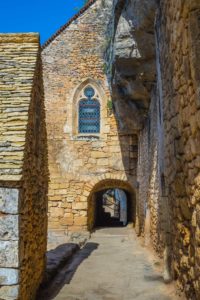
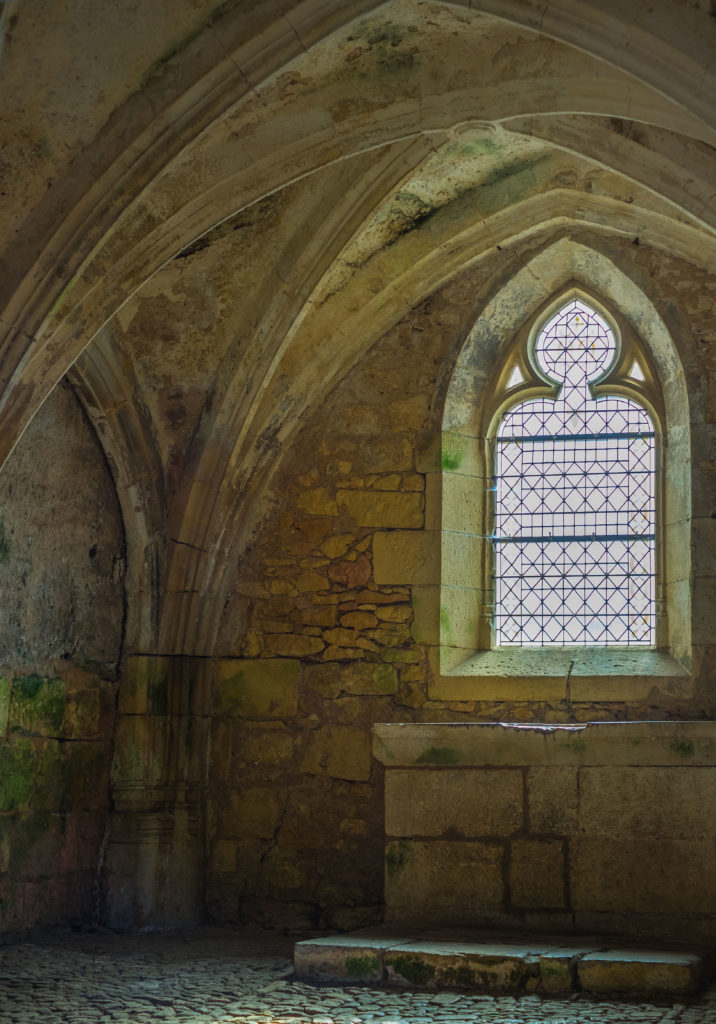
A site of transcendent historical importance
The chapel is named in honor of Mary Magdalene – “La Madeleine.” The name came to be used over time to describe the particular geological formation that makes up the string of caves here. Then, as the astounding series of archeological discoveries revealed the extent and sophistication of the prehistoric culture that flourished here, it became the name for a whole epoch in human history in this part of France.
All that makes this a site worth seeing for the historical interest alone. For me, though, it’s a place with a somewhat more emotional pull. As I walked the narrow little path in front of the caves, I tried to imagine the turmoil and violence that raged across this region for so many centuries. My thoughts turned to the people who fled here to escape that chaos, how they took advantage of a perfect natural setting to build a little community away from that other world. And, as so often happens in my travels around the deep heart of France, I tried to put myself in their place.
Have you visited any of the famous “troglodyte” sites in your travels around France? Can you imagine what it would be like to live in a cave dwelling like this? Please tell us about your experience in the comments section below. I’d be grateful, too, if you’d take a second to click on your preferred social-media button(s) to share this post with someone else who’s interested in the culture and history of France.
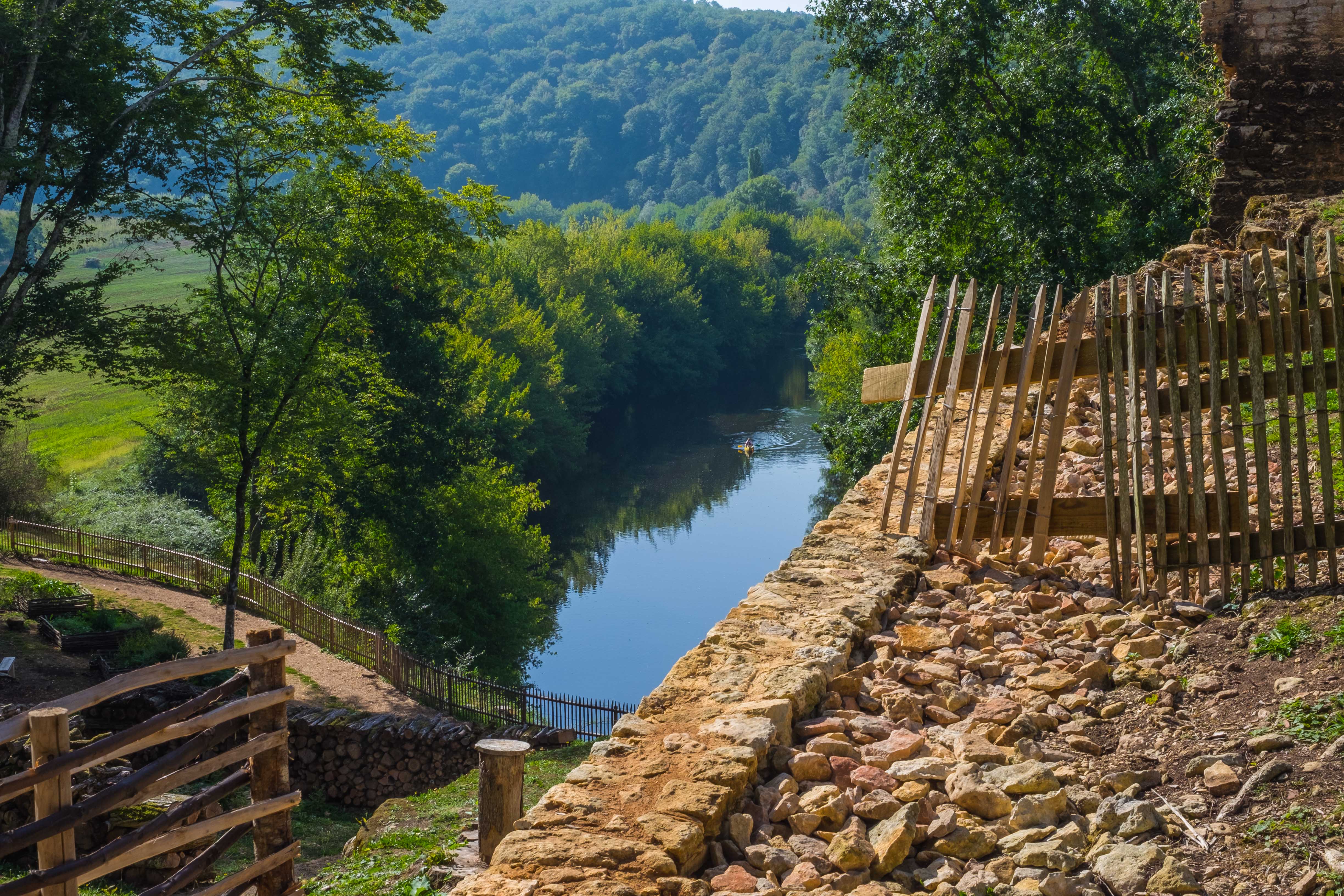
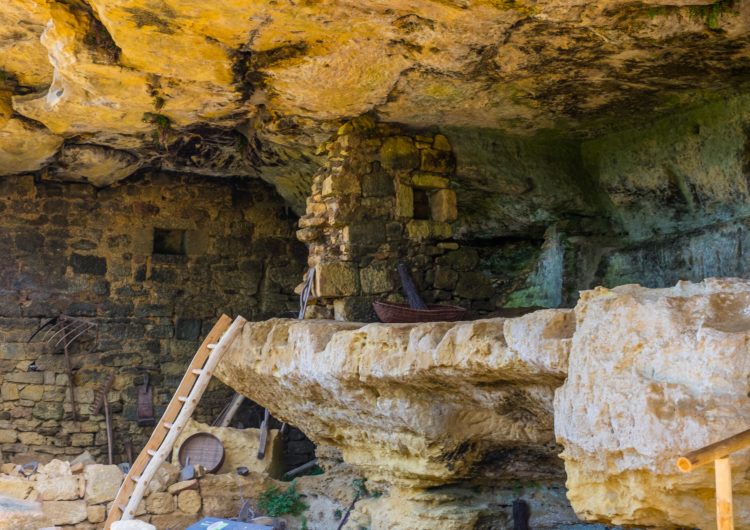

I enjoyed seeing the cave dwellings in Amboise in the Loire when I was in France last year. Some of them are still inhabited and not far from the chateau.